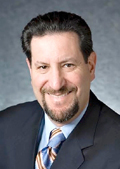 |
When Winston Churchill called for “the United States of Europe” in 1946, it’s a good bet he wasn’t asking his continent to become a carbon copy of the New World across the pond. More likely Sir Winston was prodding Europe to unite in common economic practices that would take it into the future. In many respects, Europe listened. In many others, differences still exist.
Today, the essential question for U.S. communications professionals is whether Europe 2011 is united enough for a brand to communicate effectively across still-diverse borders. Has the power of the conversation crossed the Atlantic? Is Twitter the same tool in Lithuania as it is in Los Angeles? Are bloggers in Bosnia the same as they are in Boston? In a word, the answer to these questions is no, nyet, nein or something else depending on your location.
Since 1989, McGrath/Power has been a partner of the Worldcom Public Relations Group. Worldcom has 100-plus partner firms and we have shared programs with the majority of them.
In late March 2011, we hosted roundtable discussions for our clients featuring our partners from Germany, Spain and the Czech Republic discussing the impact of new communications in the new Europe. The dialogue was highly pertinent, given how significantly U.S. communications has changed, as well as the state of the global media today.
Many U.S. PR pros believe what plays in New York will do likewise in Newfoundland. The advent of global social media platforms (read: Facebook and Twitter) has fostered this thinking for many. Our Worldcom roundtables illustrated that new PR approaches are indeed in play, but not to the extent they are here. Pitfalls aplenty await U.S. brands who believe otherwise. Combining practical experience, a recent Worldcom survey and other industry/demographic studies, input from our partners was eye opening and often humorous. Consider:
• The U.S. has a nearly two-times higher “individualism” index score than Europe, meaning we tend to look after ourselves first and “groups” second. Communicating to U.S. audiences is far more of a 1:1 proposition.
• We have a one-third lower “uncertainty avoidance index” than Europe, meaning Americans are more comfortable with “unstructured” or different communications approaches.
• Daily newspapers are read by 65% of all Europeans.
• Facebook is big in Europe but is one of dozens of social networks, many of which are country-specific. European social networks are used predominantly for fun.
• Many Europeans blog, but the power of bloggers for products and brands is not widespread beyond fashion and cosmetics.
Given this, consider the following when looking to extend a program onto European soil:
-
Choose the Right Entry Point: The U.K. isn’t always the best entry point if you are looking to influence Europe’s “mainland.” Often it is better to pick a more central country.
-
Get Mixed Up: No single channel rules. A good mix is still the norm for Europe—TV, radio, newspapers, magazines and online counterparts remain highly viable vehicles.
-
It May Not Be Sexy But It May Be Best: The traditional media is still the preferred channel for many European audiences. It may not be as sexy as social media, but it may be more effective.
-
Aim Small: When dealing with traditional media, handle meetings in 1:1 format or small group sessions. Journalists will likely only travel if their expenses are covered and many dislike larger social events like the U.S. “launch party.”
-
First Language First: Use local languages for written communication when at all possible—only the U.K. and Portugal prefer to receive information in English.
-
Not Yet B2B: Avoid relying on Facebook as a B2B communications tool because B2B companies aren’t there yet. For B2B campaigns, the traditional media and its vertical subsets may be better choices.
-
To Tweet or…? Many journalists are not yet on Twitter, so Twitter use is a country-by-country proposition.
-
Be Certain With Messaging: If you are targeting a country with a high uncertainty avoidance index, aim messaging to key groups within that country’s social fabric as opposed to individuals as we often do in the U.S.
The world may be changing, but not everybody is changing at the same time. Vive la différence and remember it when extending your brand across the pond. PRN
CONTACT:
Jonathan Bloom is CEO of Silicon Valley-based PR agency McGrath/Power. He is also a member of the PRSA Counselor’s Academy. Bloom can be reached at [email protected].
